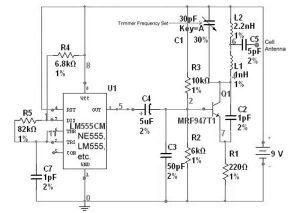Members of Congress have proposed a bill to prevent the use of contraband mobile phones in prison. This measure, initiated by Senator Tom Cotton (R-AR) and Senator Lindsey Graham (R-SC), allows state and federal prisons to use mobile phones to interfere with the system. House members David Kustov (R-TN) and William Timmons (R-SC) introduced a related bill in the House of Representatives.
Correctional officials say that prohibited cell phones are widely used in federal and state prisons. In 2017, California prisons confiscated more than 14,000 devices. Detainees use contraband mobile phones for illegal activities, including ordering beatings outside the prison wall, illegal drug operations, illegal business transactions and fleeing their homes endangering the detainees. Employees, other prisoners and members of the public, corrections officials and lawmakers said.
The Mobile Phone Jammer Reform Act empowers state and federal prisons to establish interference systems in prisons. They must report this usage to the Bureau of Prisons, which will have final authority over the system.

The bill is not mandatory, but an option for prison officials. It allows the authorities to choose from a wide range of interference technologies, including controlled access technology, surgical interference technology, beacon technology or any technology that may restrict the use of prohibited cell phones in the future. It does not specify the specific type of technology that the facility must use.
In the past, the FCC cited decades of prohibitions on interrupting signals in state agencies to prevent the agency from authorizing cell phone portable jammer. The prison authorities insisted on being able to use them.
FCC Chairman Ajit Pai challenged the mobile company last year, asking him to participate in this work. According to the “Internal Tower” report, Pai held a live hearing at the FCC headquarters in South Carolina and Washington, DC. Congressmen, prison officials and wireless telecommunications industry representatives attended the meeting.
After the 2018 meeting, the representative of Kostov told the Associated Press that he was encouraged by the committee ’s actions. CTIA representatives also attended the meeting. They thanked Pai for hosting the meeting and told its members “They recognize the real threat posed by smuggling equipment in prisons across the country”, and we thank all stakeholders for their commitment. Identify and implement legal solutions to this problem. ”
In January 2018, officials developed cell phone jamming technology in a federal prison in western Maryland. Previously, the problem was the lack of control over the signal coverage area. The problem is how to disturb the illegal cell phone signals inside the prison without disturbing the legal signals sent by cells outside the prison (such as emergency personnel). Proponents of these tests stated that the technology had developed at the time and the scope is now more predictable.